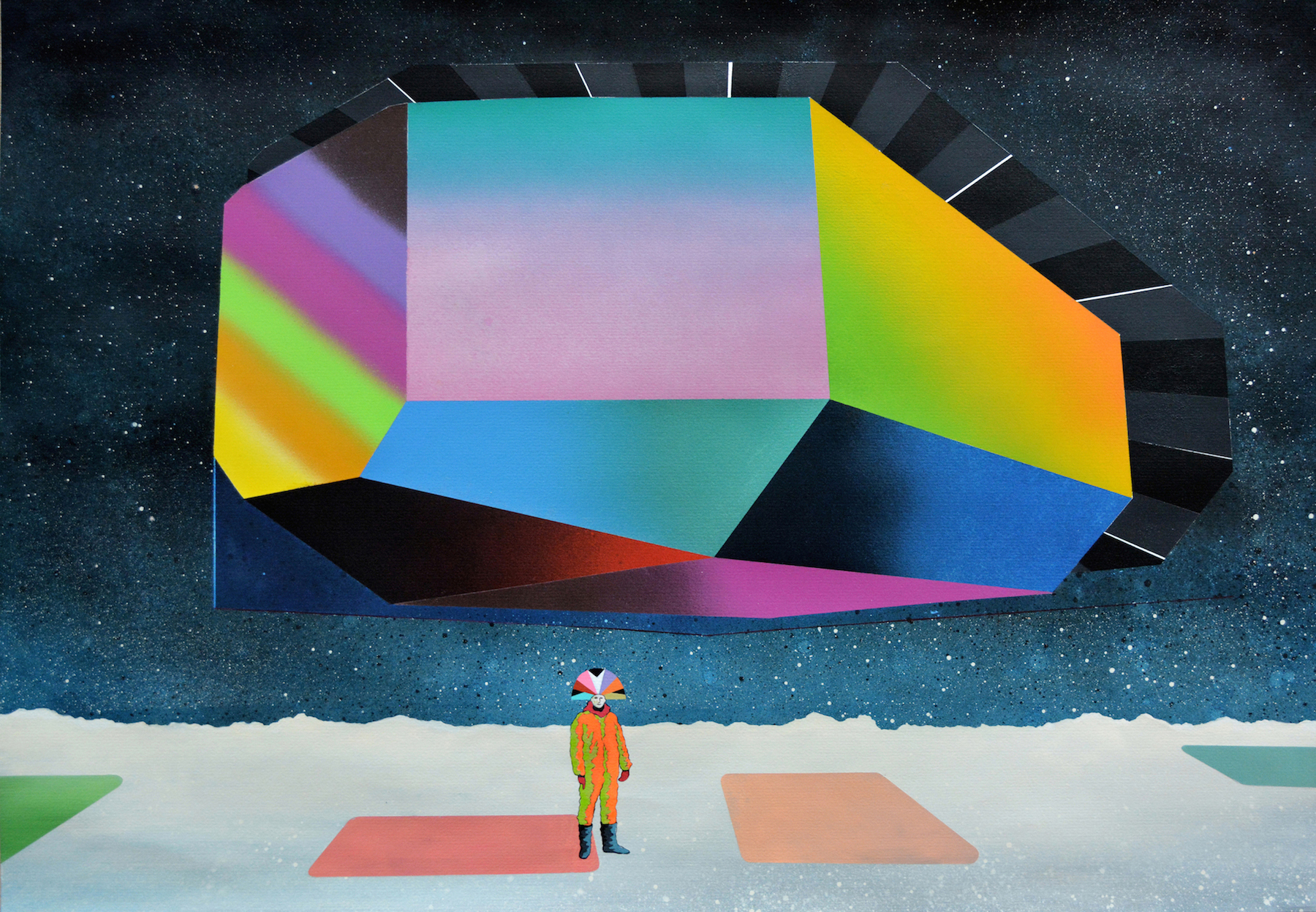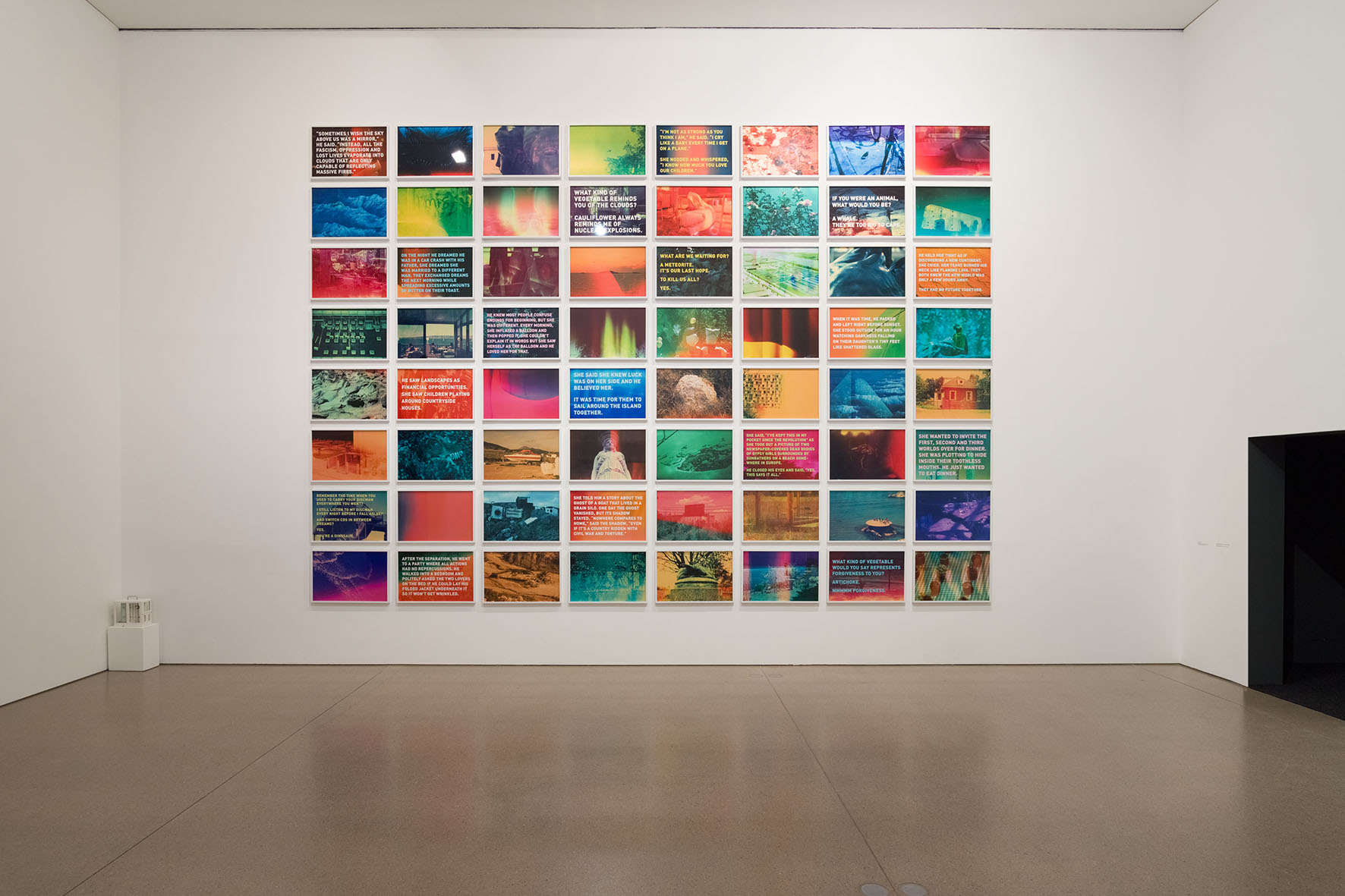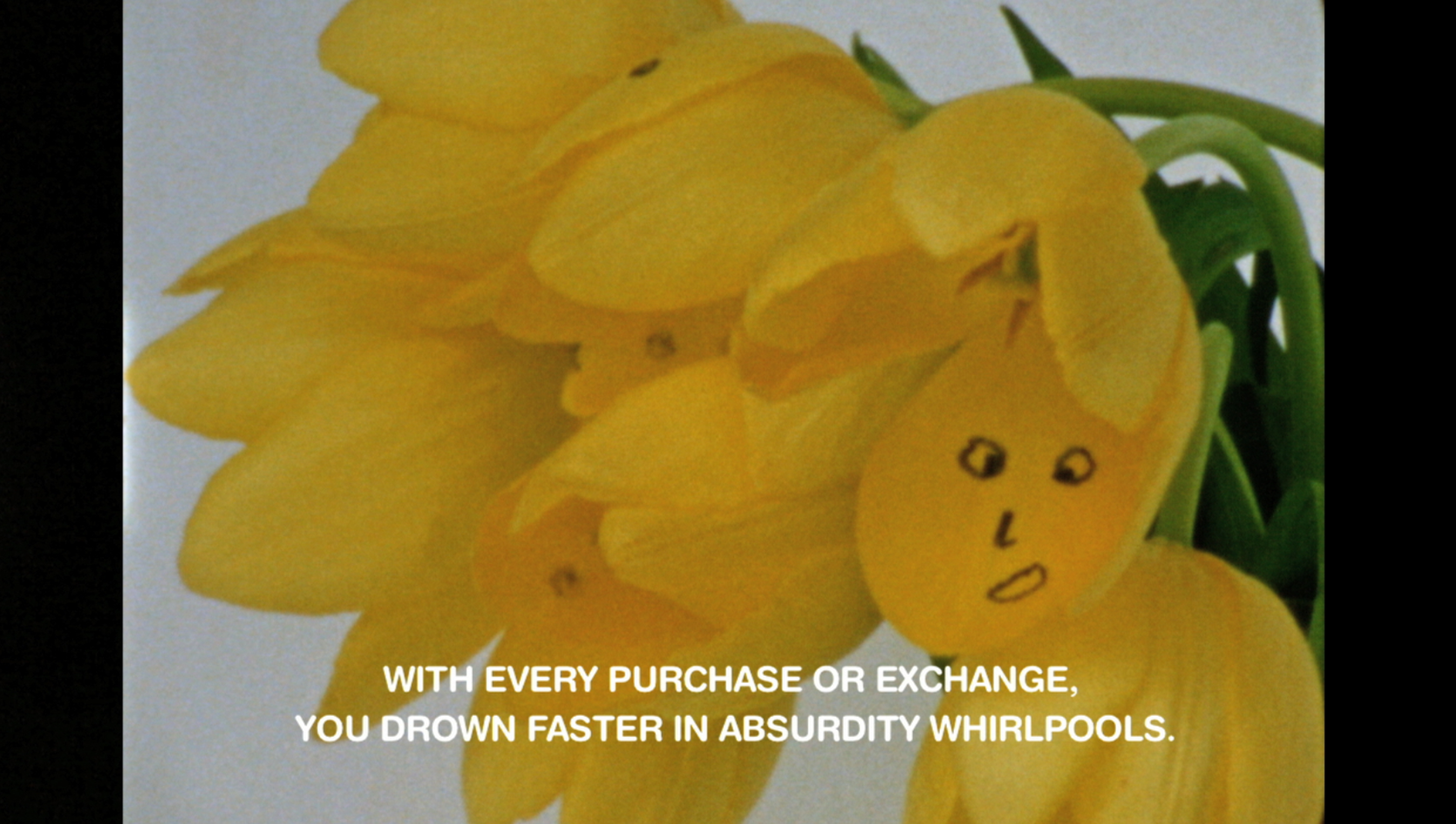
Egyptian-born artist Basim Magdy’s first U.S. survey exhibition, “The Stars Were Aligned For a Century of New Beginnings,” at the Museum of Contemporary Art Chicago (MCA), explores Magdy’s diverse body of work.
At first glance, the show is quite inviting: In the main gallery, viewers are greeted with a stack of take-home posters and rubber bands for easy transportation. One of the gallery’s large walls is painted in bright pink, the other light purple, while a white wall is covered in a grid of photos exuding the palette of saturated color film. Across one corner there is a large mirror perfect for an ideal gallery selfie.
This warm, technicolor atmosphere is exactly what the MCA’s Manilow Senior Curator Omar Kholeif wanted. During the exhibition’s press tour he explained how he hoped for the space to be emotionally and intellectually accessible to all viewers, which mirrors Magdy’s own conceptualization of his work.
Upon closer examination we find that the actual content of Magdy’s art is not entirely as bright as its outward appearance. Printed on the take-home posters is the image of a man standing on a car trying to “tickle heaven.” The man is holding a metal rod towards the sky — inevitably setting up his own demise via electrocution. The other side is printed with the very same image. Magdy plays with the idea of having the freedom to choose which side to hang, for there is no true resolution; in the end, death is inescapable.

In “An Apology to a Love Story that Crashed into a Whale,” the series of color photographs positioned on the white wall, texts telling a collapsing love story between a man and a woman adorn some of the images. The photographs themselves have undergone a process Magdy calls “pickling,” during which the negatives are dunked in household chemicals to produce saturated colors and residual textures.
Parts of the narrative are unexpectedly tinged with dark seriousness. One image reads: “’Sometimes I wish the sky above us was a mirror,’ he said. ‘Instead, all the fascism, oppression and lost lives evaporate into clouds that are only capable of reflecting massive fires.’” Another: “She told him a story about the ghost of a goat that lived in a grain silo. One day the ghost vanished, but its shadow stayed. ‘Nowhere compares to home,’ said the shadow, ‘even if it’s a country ridden with civil war and torture.’”
The exhibition also includes separate screening rooms for three of Magdy’s films. The films represent three different stages and approaches to filmmaking in Magdy’s career, using the mechanism of sound paired with still images. These films often touch on social and political interactions with dark humor, resulting in poetic, and somewhat surreal, narratives on human nature. None of the characters or settings are specific. This nondescript approach provides a space for viewers to insert themselves into the narrative. For Magdy, this open accessibility is important.

Magdy makes all of his films available online; as a result, a still photo of his film “13 Essential Rules for Understanding the World” went viral on the microblogging website Tumblr, which Magdy found to be a positive thing. He embraces social media and believes that online platforms are a practical space to foster a communal appreciation for art outside of the museum. He is open to new interpretations and iterations of his work. All viewers are invited to participate in Magdy’s narrative.
This open participation emphasizes Kholeif’s statement that Magdy’s show has a “glimmer of optimism.” Despite the sometimes bleak reality of Magdy’s artworks, a wider, overarching narrative always seems to be moving towards a brighter future. Revealing the tendencies of human nature can help foster change; we can all work together to build something new in a community, with a community, and for the community. It can be utopic.
“Basim Magdy: The Stars Were Aligned For a Century of New Beginnings” is on view at the Museum of Contemporary Art Chicago until March 19, 2017.







